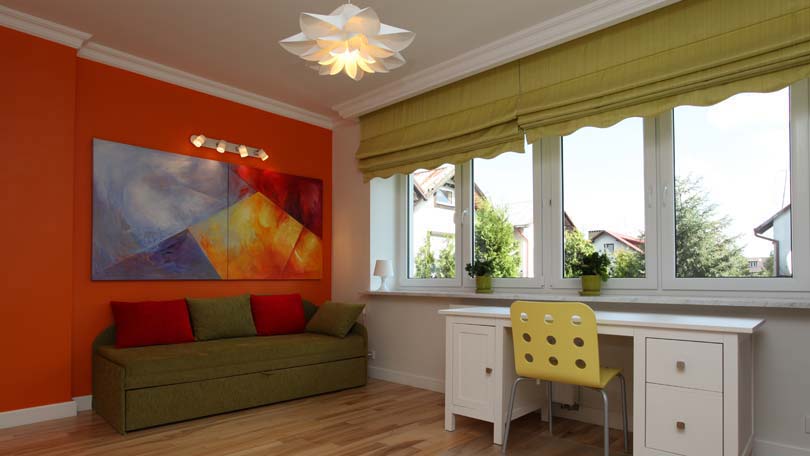
It doesn’t matter what type of paint job you are going to tackle, preparation is the most important part. So here’s the bad news. Whether you want to know how to paint a newly plastered wall, a wall that previously painted, or you want to know how to paint over wallpaper, step number one is to prepare your surface correctly and thoroughly.
A newly plastered wall is the easiest of the three projects mentioned – or it should be. Generally an alkali-resistant plaster primer should be painted on the raw plaster. This is then covered with a relatively inexpensive undercoat, which will provide a key for the topcoat. The final coat is the one that provides the final finish, although there may be several of these. There is nothing difficult to consider, and anybody can get it right.
On the other hand, if a wall has been painted previously, you will need to get rid of any bits of original paint that are peeling. You may also need to paint on a primer and/or an undercoat, depending on what was originally applied to the wall. This can be really hard work, particularly in terms of preparation. Sometimes an uneven surface can be sanded, but often it will need to be thoroughly stripped.
When it comes to wallpaper, nothing is obvious. This means that you are going to have to do a bit of detective work – unless of course you did the wallpapering job yourself, in which case you will (or should) know what materials were used, and how they were used. Well hung, wallpaper can cover a multitude of sins.
First off you will need to see how sound the surface is, and how likely it is to peel if you coat it with wet paint. Usually, to strip wallpaper, what you do for starters is to coat it systematically with warm water. As the water soaks into the paper, it starts to come away from the wall. But sometimes wallpaper has been stuck to the wall so firmly that it becomes exceedingly difficult to remove.
One way to approach a project of this kind would be to try and strip the wallpaper before you even start painting. Certainly that can work.
If you aren’t able to get the wallpaper off easily, it may be a lot easier to simply paint over it. But if you have started to strip it, perhaps by pulling off sections, you might find that all you have done is to create a hugely uneven surface that will look really ugly coated with any type of paint. Remember that preparation is paramount when it comes to a good, professional paint job. If you create your own craters, you are going to have to rectify them with a filler of sorts. It isn’t difficult to do, but it time consuming and can often be avoided.
Another factor to bear in mind, if you want to paint over wallpaper, is to assess the texture of the wallpapered surface you are going to be painting over. Even if the wallpaper is totally sound, and won’t start peeling when it comes into contact with moisture, if it isn’t smooth, this could also cause problems. By the same token, depending on the effect you want to achieve, you could use texture in your favor. Remember that in the Victorian era (particularly in the UK), there was a type of wallpaper – anaglypta – that was embossed and manufactured for use under paint. The idea was that it would look a bit like the glorious steel-pressed ceilings used so widely during that era. Anaglypta was generally pasted below a dado rail in passages and living rooms, where a decorative textured effect was required.
Now if the embossing or other texture on your wallpaper isn’t “glorious”, you are going to have a problem. Some embossing is, after all, just plain ugly, and certainly not intended for over-painting. On the positive side, textured paper is usually the thicker type. This means that you may simply have to strip the outer layer of the wallpaper. Often it will come away quite easily leaving the part that was glued intact. If, when you start painting, the remaining paper starts to bubble, STOP. This is an indication that it will be a very easy job to remove what is left.
Another potential problem when painting over wallpaper is covering the colors and patterns on the paper. If the wallpaper is a dark color, or there is a lot of pattern in its finish, then it will be likely to take multiple coats of paint to get rid of both color and pattern. Generally, the best approach is to coat the paper with a universal undercoat. Once this has dried, paint a good solid coat of white paint – unless of course you are aiming for a dark color, in which case use that from the start. Allow each coat of paint to dry thoroughly, over-coating until you achieve the result you want to achieve.
Consider all these possibilities before you paint over wallpaper. It may even be better to call someone in to strip it for you!
